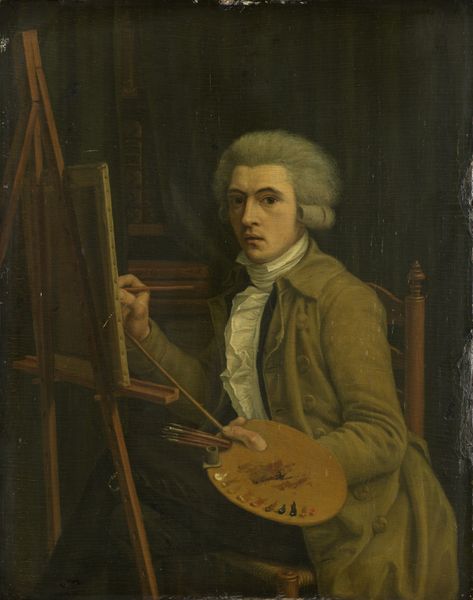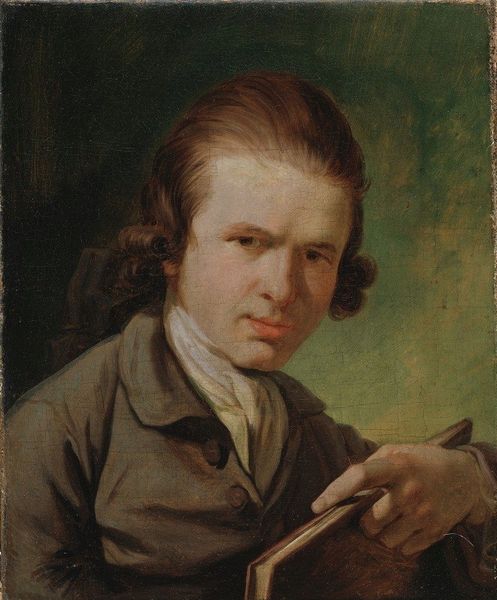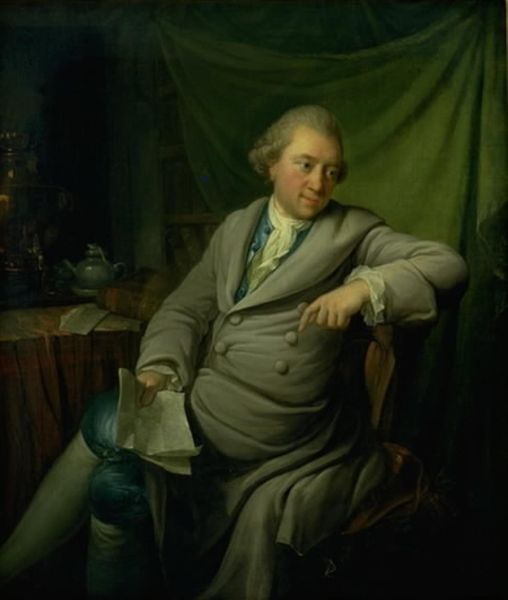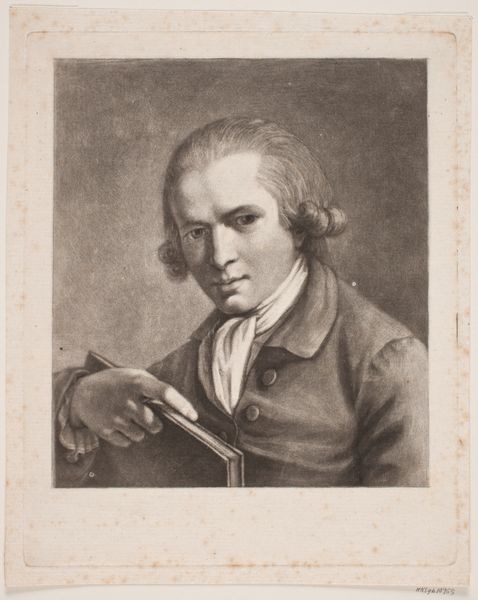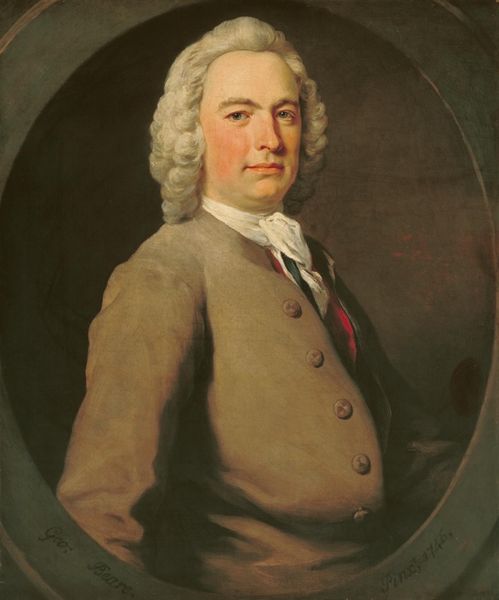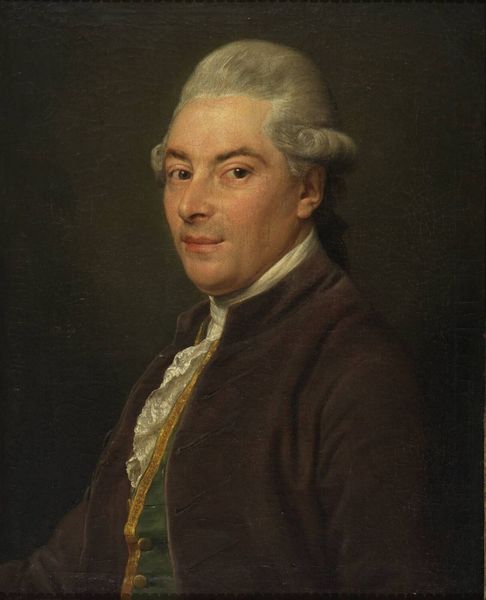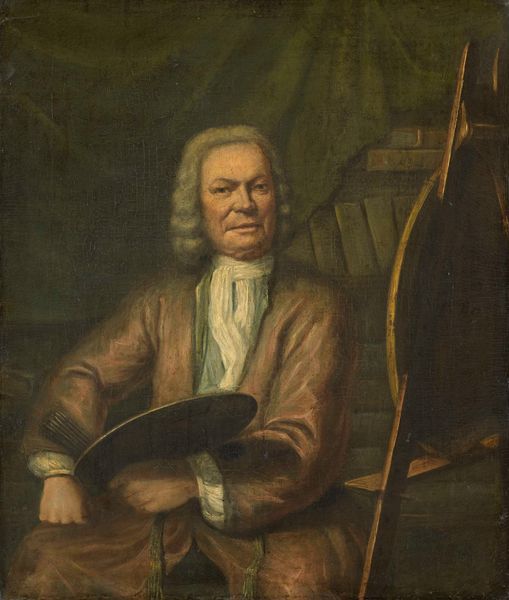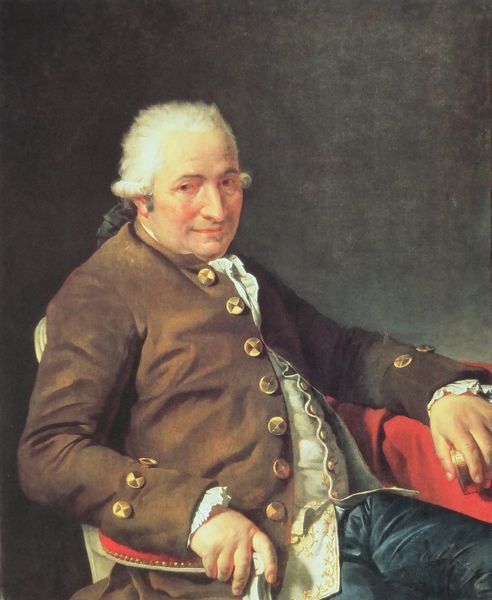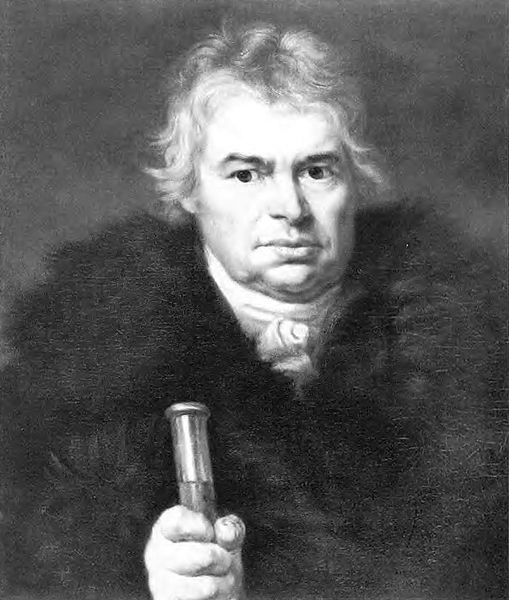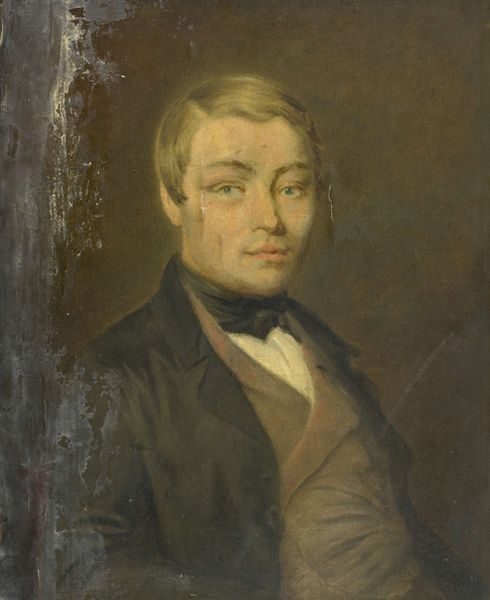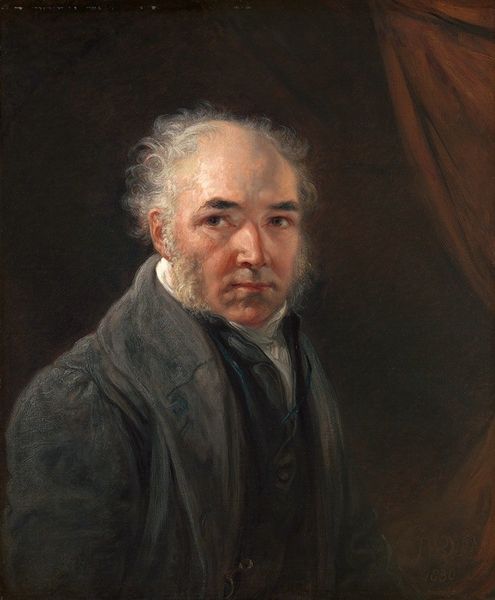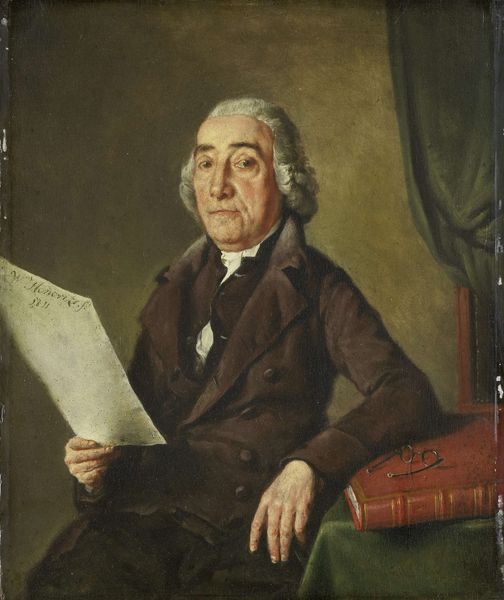
Dimensions: height 25.5 cm, width 20 cm, depth 5 cm
Copyright: Rijks Museum: Open Domain
Curator: This is "Portrait of a Painter, probably Harmanus Uppink." Created between 1785 and 1791 by Willem Uppink, using oil paint, it offers a glimpse into the artist’s world. Editor: My immediate thought is of restrained energy—the muted tones almost feel like a stage set, with the subject caught between roles. It speaks of process and performance, the performative nature of creation itself. Curator: Interesting. Looking at this through an iconographic lens, consider how the easel, brushes, and palette aren't mere tools, they’re symbolic declarations of identity, signifying skill, intellect, and creative spirit. Editor: Yes, and I can't help but focus on the actual oil paint itself. It’s applied thinly, revealing a real sensitivity to the raw materials – almost reverential. The construction of this artistic identity feels both controlled and quite humble. Look at his clothing. Curator: It’s the Late Rococo period, which gives this painterly staging even deeper meaning. We can appreciate here how artists were keenly aware of crafting not only images but also public perception, placing themselves strategically within societal narratives. The canvas represents an empty surface, pregnant with opportunity, ready to be filled with vision. Editor: Right, but what’s fascinating is the physical labor involved. He must’ve sourced pigments, prepped canvases. We tend to overlook these aspects when viewing a finished piece like this. This man handled raw materials, grounding the artistic identity you mentioned. The muted colors were chosen with care. He is both thinker and laborer. Curator: Absolutely, and let's not forget the "hand of the artist" - literally represented here, paintbrush in hand! It is a powerful symbol – a conduit between thought, vision and the material world. Notice, the placement of the easel. Editor: Yes, I see what you mean. It acts as a mediator between the artist and his creation. I find it striking how this work highlights the contrast between the tangible effort of making art, and the ethereal notion of artistic inspiration. Thanks to Uppink we see the making of art revealed and celebrated! Curator: I agree. It’s rewarding to consider the layers of meaning Uppink wove into his self-representation through careful selection of both symbolic and representational imagery. Editor: It has truly brought attention to the physical nature of art itself! I like seeing the painter as constructor and maker of objects!
Comments
No comments
Be the first to comment and join the conversation on the ultimate creative platform.
